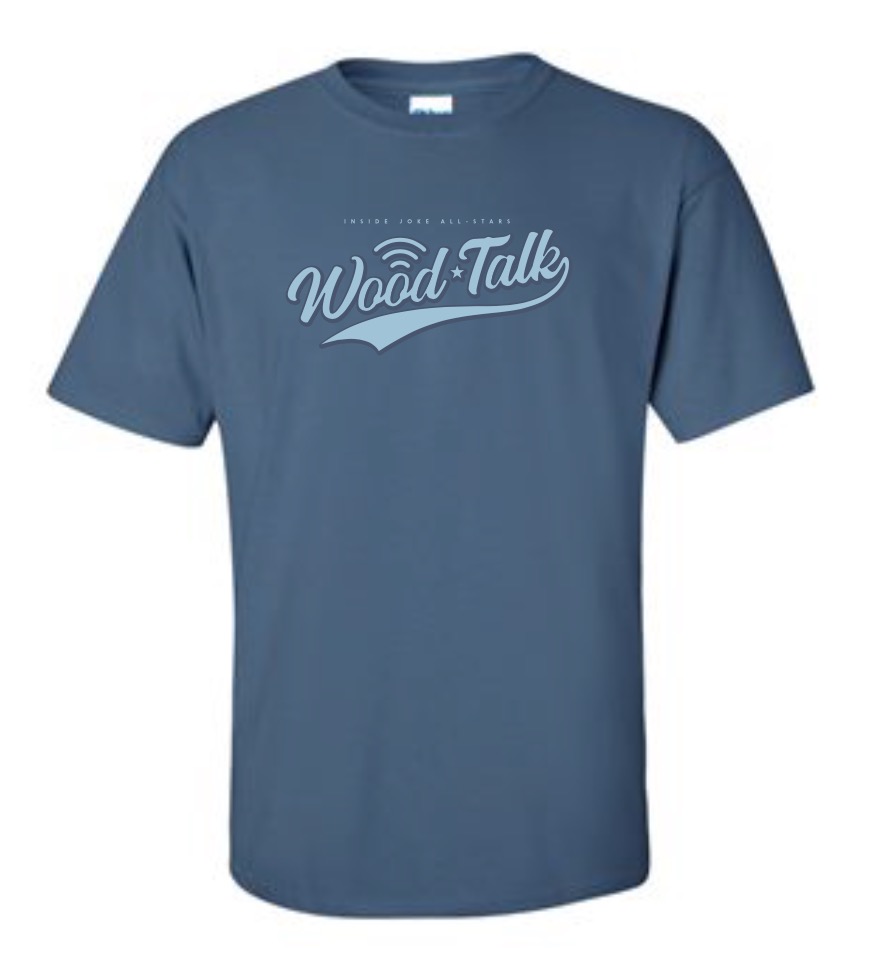We are breaking from our usual format while we’re on vacation but don’t worry, we’ll be back on Sept. 14th! Today, Marc is answer a bunch of finishing questions from the scrap pile.
- Christopher recently finished a side table that lives next to his baby’s co-sleeper and the smell is causing a problem. He wants to know what he can do to get rid of the smell and how he can prevent this in the future.
- Jon is repainting a sitting bench and the original finish was paint topped with Johnson’s paste wax. He wants to know if he should remove the wax before repainting and which wax finishes we would use.
- Thom is looking for a better finish for his wooden mug.
- Walter wants to know if water-based finishes are appropriate for a kitchen or bathroom. He’s concerned the finish will dissolve.
- Wesley is considering using shellac under his poly and wants some opinions.
How Can You Support Us?
Use the links on the left and sign up for a recurring donation, kick it up a notch and wear a Wood Talk T-Shirt, or leave us an iTunes Review

7 replies on “WT269 – Your Finishing Questions”
Thom’s Question.
The main issue is what’s a Safe Food Finish… Technically according to the FDA, all finishes for wood are safe once it has completely cured. THAT can take up from 1 to 3 months depending on the Humidity and temperature while it cures. What I recommend is a Bar Top Epoxy coating. I have used it in the past and it works fine. even with end grain bottoms. Pour it inside your mug, turn it on it’s side to get full coverage inside.. wait a minute then pour out the excess. Wait til it has dried before doing the outside and you can use a brush if need be but make it a natural hair. now the waiting begins for at least 30 days. after which you can go ahead buff and polish as needed. I have a mug that I use regularly and the finish has held up and I don’t have tail or a third eye from using it.
HOWEVER!!! I will absolutely recommend buying some cheap glass tumblers and inset them into your mugs. Shot glasses the same way. Half a dozen coats of Lacquer on the outside and you’re golden. and they sell better.
Great show Marc. Finishing is something most (not all) woodworkers dread and can be a conversation most also avoid. I learned a lot from this episode, especially re the water based/waterborne finishes. Hope you guys are enjoying your vacation.
Not as “woody”, but you can use a stainless steel insert to get the wood look but not the issues with water & wood.
An example:
http://www.rockler.com/travel-mug-turning-kit
David Picciuto used a product called ArtResin (http://www.artresin.com) for a cutting board inlay. It makes a bunch of safety claims, so it’s probably a step up from a regular marine epoxy. That said, I’d over it in so many coats of epoxy it would effectively be a plastic cup.
Yes Brian Brazil, ArtResin is food safe and non-toxic. I saw it on Drunken Woodworker too and I’ve used it on cutting boards. They have ASTM D4236 certification that means they are meant for home use not marine or industrial use. So you don’t have to worry with their product about respirators, etc. It’s also non-yellowing so they say so you get to keep the true wood color instead of it turning yellow over time. Highly recommend.
Good show about using shellac as a sealer and binder. we use it as stated all the time as it works great to save time and can be used as a finish itself plus it is so easy to cut with denatured alcohol and is a lot less expensive than the already made stain or wood conditioners available.
I agree that an insert is the best solution for a mug to sell. Optionally make it removable to put in the dishwasher. You can use something made as an insert or as a cheap drinking glass. Material options already mentioned are stainless and glass. Polypropylene is also worth considering, as it’s very safe and does not add any taste. Glass and polypropylene can be clear if you want to see the wood; stainless and polypropylene are less breakable and can be thin and light.
Without a liner, the finishes I trust to be food safe are pure tung oil once cured (not tung oil based toxic brew), walnut oil (a real food ingredient drying oil), and shellac (again, pure, mixed myself from flakes). Various waxes and non-drying oils are also food safe but not particularly useful.
Dewaxed shellac is surprisingly water resistant, but would dissolve if an alcoholic beverage was ever put in the mug. So I would go with oil. It would take a really long time, but I would fill the mug to the brim with walnut oil or tung oil, let it soak for 30 minutes, and then pour the oil into a jar to save for the next coat. Wipe the mug well and let it cure for a while, maybe a week, in a warm spot. Repeat maybe six times, with longer cure times at the end.
Yes, there are epoxies that are legally allowed for food contact, but I don’t think anyone knows for sure how safe they are.
The comment that a lined mug would sell better is right on. Then you are not asking people to trust that you really used the food grade stuff you said you used, nor are you asking them to trust the giant evil corporation that claims the chemicals are safe.